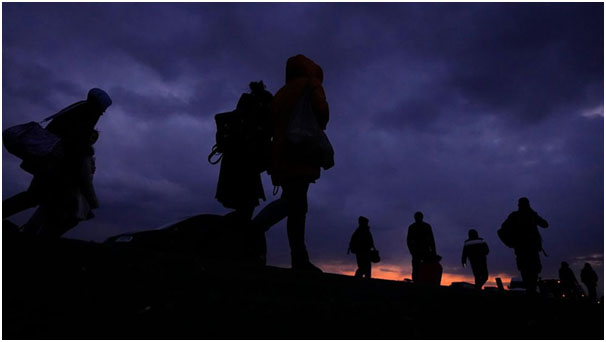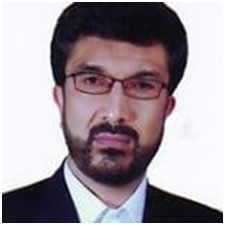 Some Notes on the law of the “National Residence Organization Plan” of the Islamic Republic of Iran for immigrants in Iran.
Some Notes on the law of the “National Residence Organization Plan” of the Islamic Republic of Iran for immigrants in Iran.
According to some representatives of the Islamic Council of Iran, this law results from the government bill and the plan of the Islamic Council regarding the organization of immigrants, asylum seekers, and foreign citizens residing in Iran. Generalities of this law were approved by the Islamic Council of Iran on November 13, 2022, with 141 votes in favor, 91 votes against, and 7 abstentions. With more acknowledgment from representatives of the supporters and opponents of its incompleteness, inadequacy, and contradiction, it was sent to the relevant commissions for correction and rewriting so that after the correction, it will be presented again in the Iranian Islamic Council. After approval, it will go to the Guardian Council of the Constitution of the Islamic Republic of Iran so that its agreement and coordination with the Constitution of the Islamic Republic of Iran will be reviewed and approved.
This plan is prepared and operational under the name of the “National Residence Organization Plan” to organize foreign immigrants. While there is a difference between residency and immigration in national and international law. In addition, migration is one of Muslims’ values and religious concepts, and even the calendar of Islamic countries has been created based on that concept. Therefore, it was deserved that more emphasis was placed on the value and Quranic concept of emigration and migration than the word of residence. In addition, the Islamic Republic of Iran also has about five million immigrants outside Iran, and this law could cover both foreign immigrants in Iran and Iranian immigrant citizens outside Iran.
In this planning, the creation of organizations and institutions is foreseen, which is a sign of the attention and importance given by the legislators and policymakers of the Islamic Republic of Iran to the issue and phenomenon of immigration and residence of foreign citizens in Iran.
The Immigration Coordination Council
This Council, which consists of ministers and important officials of the country, has the leading role in policy-making in the field of immigrants. The main members of this Council with the right to vote include: The Minister of Interior as the head of the Council, the Minister of Information, the Minister of Foreign Affairs, the Minister of Cooperation, the Minister of Research and Technology, the Minister of Education, the Commander of the Police Forces, the Attorney General of the country, the head of the program organization and Budget, Head of the National Migration Organization (Secretary of the Council), Head of the Martyr Foundation, Head of the Civil Registry Organization, Head of the Real Estate Registry Organization, Scientific and Technological Deputy of the President, Head of the Red Crescent Organization, Human Rights Deputy of the Judiciary, Head of the Islamic Azad University.
Non-Voting Council Supervisory Members
One member of the National Security and Foreign Policy Commission and one member of the Internal Affairs Commission of the country and councils will be elected by the Islamic Council.
The National Immigration Organization
This organization has an independent legal personality and as a government institution under the Ministry of Interior. The Minister of Interior appoints his deputy as the head of this organization. This organization plays the role of the headquarters in the plan of the National Residence Organization to implement the approvals of the Coordination Council to create uniform management at the national level. Its special work is the subject of Article 5 of the plan of the National Organization for Residency of Immigrants.
The Commission for Organizing of Foreign Nationals
This commission is established in the organization in line with the duties assigned in this law. Its members include the head of the National Immigration Organization, representatives of the Ministry of Information, the General Police Command, the Revolutionary Guards, the Ministry of Cooperation, and the Ministry of Foreign Affairs.
As it is obvious, the interference of duty and work in the stage of application and operationalization of the content and materials of the plan of the National Organization for Residency of Immigrants is clearly seen in these three institutions.
This law is very crowded and sloppy in terms of form and content. It is as if a group of students in the first semester of the law Faculty has prepared a list of laws. In terms of appearance, it is very long and tedious. Although it is at most 42 articles, it is as long and detailed as 140 articles because some articles of this law contain several pieces and several other notes in such a way that such articles are considered a medium or short law.
In terms of content, some materials and content are inconsistent, intersecting, incomplete, incomprehensible, and in conflict with some national laws of the Islamic Republic of Iran, such as the Civil Service Law, the Citizenship Law, the purchase of immovable property and the sixth development plan of Iran, etc.
One of the features of this law is its security and criminalization. This law has generally looked at foreign citizens residing in Iran with glasses of threats, not an opportunity for threats or opportunities. Therefore, most of the immigrants’ behavior has been criminalized. Of course, this criminalization also includes Iranian citizens who are related to immigrants. The criminalization of immigrants and foreign citizens residing in the Islamic Republic of Iran as well as Iranian citizens in Articles 8, 11, 20, 31, 33 and the security aspect of considering foreign immigrants in Articles 9, 11, 12, 16, 19, 20, 27, 31, 32, 33, 36, have been reflected.
One of the consequences of immigration and residence of foreign citizens in Iran is the Sharia (but illegal) marriage of Iranian women with foreign citizens and their births. Statistics show that 150,000 Iranian women have married foreign citizens, and the number of children born from these marriages is about 500,000 boys and girls, many of whom are without official citizenship. The activities of Iranian civil society and non-governmental organizations had started since the presidency of Seyyed Mohammad Khatami in the Islamic Republic of Iran to arrange the citizenship of children of Iranian mothers and those without citizenship. Finally, in 2010, the citizenship of the aforementioned people was approved by the Islamic Council of Iran. Since the implementation of this law, 14,000 children of Iranian mothers have been able to obtain citizenship. The current “plan of the National Organization for Residency of Immigrants” cancels this law and turns it into temporary citizenship! It will probably create a “new concept” in civil and private international law.
It is hoped that the commissions of the Islamic Council are related to the affairs of foreign citizens and foreign nationals! Examine the “National Residency Organization Plan” with the opportunity, patience, and unsuccessful experiences of the past in expelling and deporting immigrants (which are saying about 27 million Immigrants have been deported from Iran over the past years!). Or consider their unplanned and unaccountable stay so that the immigrants are considered as economic, social, and cultural opportunities for the Islamic Republic, and also the immigrants, especially the homeless Afghan immigrants in the new era, in Iran Have peace and mental security.
Endnote:
https://www.indiandefencereview.com/the-story-of-the-afghans-deportation/





 Mohammad Asif Javadi is an Author, Poet, and Analyst of Political Issues. He was born in 1967 and Graduated with Political Science. Mr. Javadi Writes Articles and Analyses about Politics, Culture, Geopolitics, and Migration Issues.
Mohammad Asif Javadi is an Author, Poet, and Analyst of Political Issues. He was born in 1967 and Graduated with Political Science. Mr. Javadi Writes Articles and Analyses about Politics, Culture, Geopolitics, and Migration Issues.